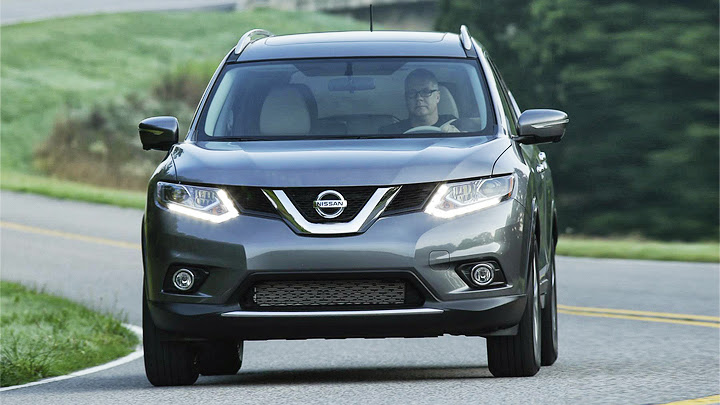
This automaker’s participation at this segment is also made with Qashqai, which is also called Dualis. They all share Renault-Nissan’s global platform which is also responsible for vehicles like Fluence and Kangoo. Qashqai and X-Trail are sold together in Europe because the latter used to be the “off-road counterpart”, with traditional SUV concept while Qashqai is an urban crossover. North America, on the other hand, ended only with Rogue as Nissan’s entry-level crossover (which is basically a heavily-redesigned Qashqai) because it also offers Xterra, a body-on-frame SUV which is somewhat more expensive – Murano, Pathfinder and Armada compete at higher price ranges.
The global debut made at Frankfurt gets interesting to analyze because it’ll obtain different reactions according to the country: Qashqai’s public simply won’t notice it, because it was the only one to stay untouched. Rogue’s clients will take it as a perfectioning of the original car, while X-Trail’s fans were the most surprised: Nissan decided to create a single global crossover, whose all-new project is based on this group’s Common Module Family (CMF) platform and intends to combine Rogue’s trendy design with X-Trail’s off-road capabilities and some other features which are new for both, in order to make the new car more competitive than selling those two separately.








Looking at the pictures reveals once again Nissan’s evolution on the design department. The new model presents elegantly smooth volumes, instead of repeating the competitors’ strong and square creases. Such decision made a much cleaner design which deals with light and shadow more naturally, almost looking differently according to how it receives illumination. Not to mention that fluid, organic shapes like these tend to look older much later than what this very automaker did in the last decade – the old Tiida is an excellent example of that. After making X-Trail’s rugged style look older since 2007, now Qashqai will be considered the “classic” brother.
Besides, the new construction brought several interesting items for both versions. Accessing the rear seats was facilitated with 77-degree-opening doors. There’s theater-style seating to ensure better visibility for everyone and, for the first time, Rogue can take seven. While the middle-row seats can recline and slide, the third row can be folded to increase trunk space. Cargo areas include a between-the-seats box which fits up to a 10” tablet, and an additional division for the trunk, which can be placed in two different heights to enable storing different kinds of items with safety. There are also modern items such as panoramic sunroof and LED lights – upscale versions bring the entire headlights made of them.








There were changes in all dimensions, which increased the internal space mostly by separating the axles, rather than also the overall size. The impressive 0.33 drag coefficient reflects the project’s modernity, which the cabin follows with the equipment list: Rogue includes Altima’s Zero Gravity front seats, which bring higher comfort by minimizing the transmission of external driving vibration to the occupants. It can also have a 7” touchscreen for the infotainment central, nine-speaker Bose audio system, hands-free Bluetooth connection, NissanConnect system and most of the latest electronic safety systems. This car brings a 170-hp 2.5L engine with Xtronic CVT transmission with optional AWD.
X-Trail’s features aren’t so different of Rogue’s, including Google satellite navigation, ecologic driving advice, driving information displayed on the central touchscreen and, once again, AWD system. Through a rotary switch at the central console, it’s possible to choose between FWD, automatic mode or permanent all-wheel-drive. The car’s electronic safety controls include Active Ride, which monitors the road surface to adjust damping levels, hill assistants and Active Trace, this one responsible for braking the wheels individually in case of low stability situations. These crossovers will be offered in more than 190 countries until next July.